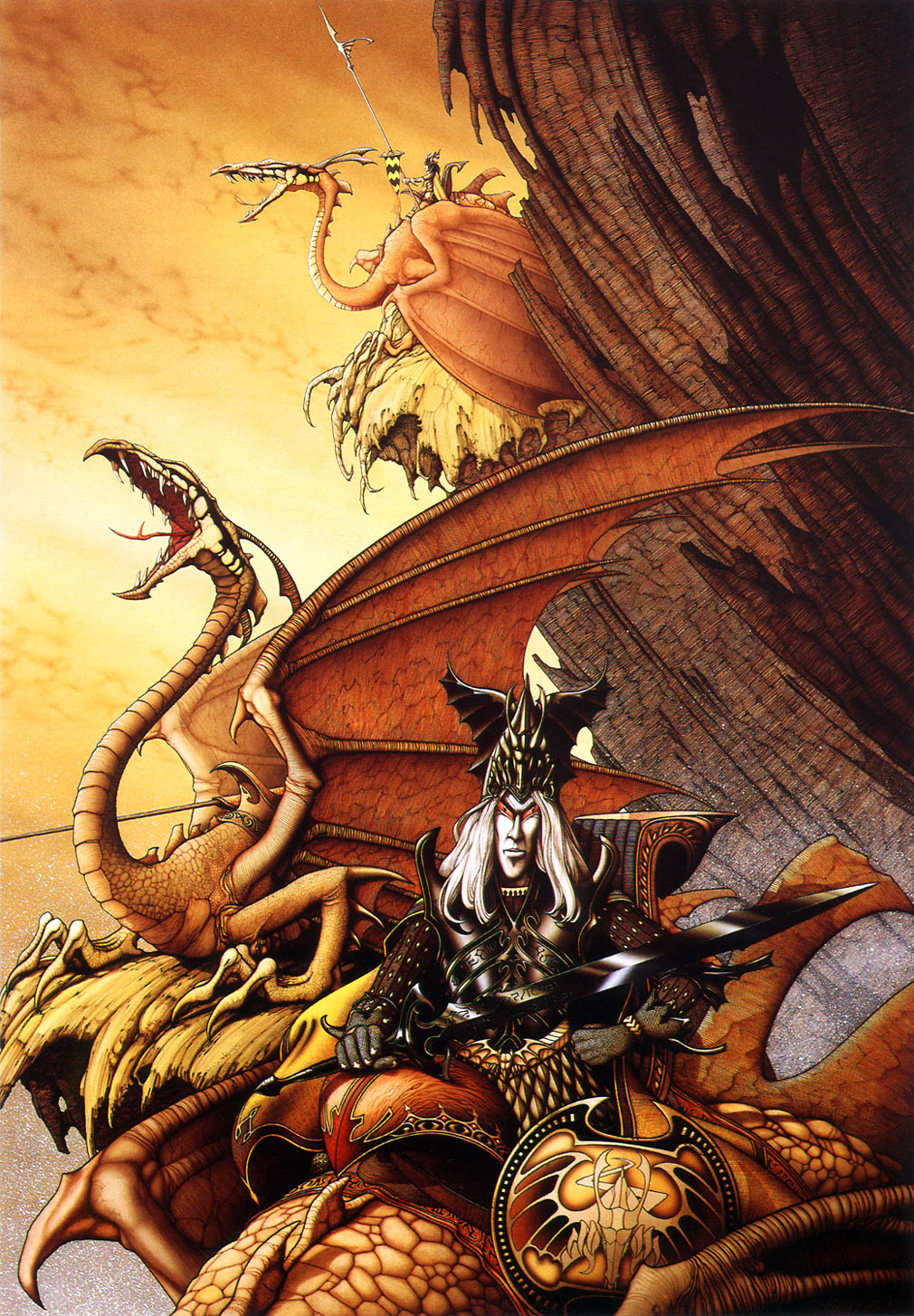The Story
 |
| If you know this artist, please let me know |
ASIMOV is a
big name, but I don’t know how many people have read his work beyond the Foundation series and the copy of I Robot with Will Smith on the cover. Maybe a lot? But he rarely comes up in scifi conversations, unlike Clark and Dick.
The Gods Themselves was written a bit later in
Asimov’s proverbial game. By the time it was published, Asimov was already a
fabulously popular author who had quit academia to write full-time. The book
itself was one of the first after a decade-long stint of writing primarily scientific nonfiction
and definitely shows his disenchantment toward academic politics.
As with a lot of Asimov, the characters in this story are less important than the premise, not because he isn't interested in people, but more that he is interested in human society as a creature in itself. The book revolves around
humanity’s accidental discovery of a new form of energy manipulation as a
result of a tiiiny amount of interaction between two ‘parallel’* universes.
*Note: In Asimov’s understanding, there is a
difference between the idea of a ‘parallel’ versus an ‘alternate’ universe.
A parallel universe implies that another universe (possibly with completely different universal laws i.e. life might not be carbon-based) is simply existing alongside your
own universe, and that it is not necessarily connected in any way except in the way that it also just simply exists. In contrast, an alternate universe implies a connection between the space-time continuum of
both. That is to say a world where Hitler didn’t exist versus one where he did, or where there are no shrimp. This is by
far the more popular trope, because it is still recognisable within our sphere
of experience and the other, simply, isn’t. An example of a parallel dimension could be the 'demon dimensions' in Buffy and Angel, or Lewis Carol's idea of Wonderland - places where shit is just generally different.
This interaction between two parallel universes, both with radically different natural laws, is able to cause a shift in the subatomic structure of a certain kind of metal, making it increasingly radioactive. And BAM, just like that, suddenly humankind has an infinite source of energy.
The book is divided into three parts and set during a period in Earth’s
not-to-distant future. Humankind, as a result of the infinite energy provided by the new 'Pump Technology', has solved most major world problems and has even set up a lunar space station as the
initial step out into the stars.
The story hinges on the actions of three outcasts as they attempt to study the repercussions of Earth's new phase of technology. Peter Lamont, an Earthman, is searching for answers to how Pump Technology was 'really' invented. A Lunarite called Selene finds herself entwined in the political manoeuvrings
between Earth and the newly independent Lunar Station. And finally, there is Dua, an enigmatic creature in the dying
parallel universe who discovers a horrific secret.
The Tasty Bit
One of my
favourite things about a great scifi story is that it’s not necessary
to recreate Star Wars for it to be a
masterpiece. Aliens, space travel and Jetson-like gadgets are sort of like dragons and elves, a lot of the best fantasy doesn't have it.
In The Gods Themselves, Asimov creates a
single new technology, an infinite power source. It’s a fantastically useful technology
of course – but it’s still just the one. He then sends the new tech into his
world (technologically similar to our own) and watches as it sets the entire story
of humankind on its ear.
One of the
most fascinating things about technological progress of humankind is that all
it takes is one useful thing and the
entire world – society, economy, political reality – everything changes. We’ve
made all kinds of efficient adaptations to it, but we are still using the steam engine to get power for our cities, iPads, cars
and air conditioners to this very day.
And no one
can ever foresee how far and fast the world will move in these situations. Thus,
it’s great to see Asimov’s characters struggling to find new ways to even think about the repercussions of the new
technology. They have absolutely no idea, and neither do I so it’s a great way
to follow a highly complex story.
Verdict
My one problem
with Asimov is that he can be a bit dry. His characters are very human, but a
bit lacking in emotional reactions. His stories aren’t really about how people
deal with each other. But frankly that’s fine because he makes up for it in unique
story lines and bloody interesting puzzles.
He is also
the best sciencesplainer that I’ve ever come across. It may be pseudoscience
but I’m fairly sure I know exactly what he’s trying to say, and that's really rare 'cause my maths and science skills are nil.
After hating his Foundation series, it was a massive relief for me to fall back into
my general adoration for the man with The
Gods Themselves.
The book has some
rough edges, but is well worth a read.








